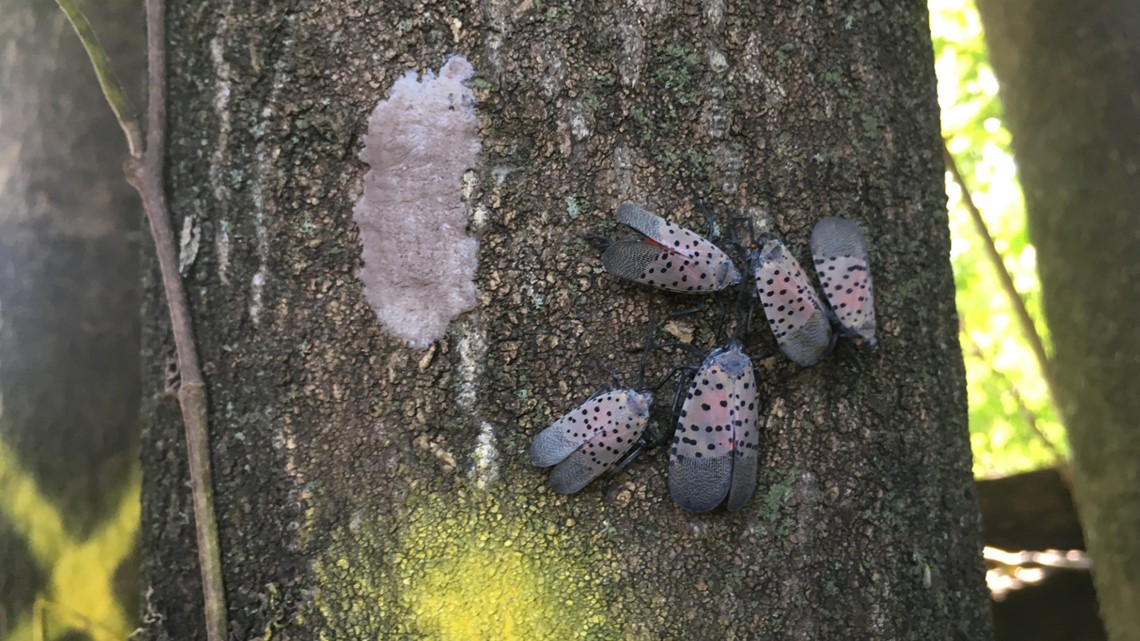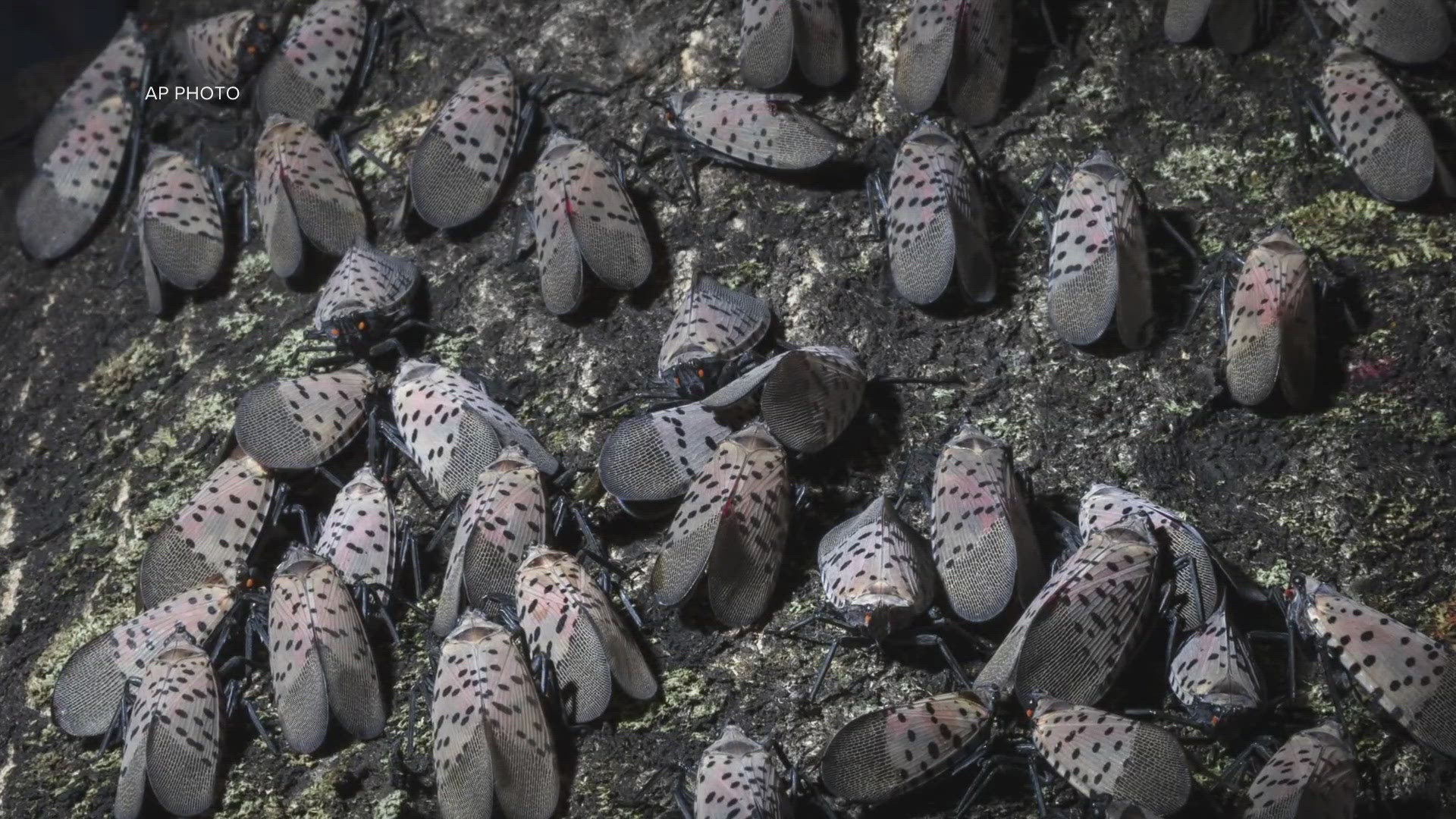WASHINGTON — Spotted lanternflies are back and are just as much of a nuisance as ever.
The inch long and half-inch wide planthoppers have been spotted jumping around D.C., Maryland and Virginia. The bugs first appeared in Pennsylvania for the first time in the U.S. in 2014. Now, they're in 17 states.
As an invasive species in the U.S., spotted lanternflies have no natural predators here, allowing them to seemingly take over. And they’re bad for trees, plants and crops. The bugs feed on the sap of their hosts, taking energy resources. Even their waste causes a fungus called sooty mold, which can grow to entirely cover a plant or tree, prevent it from growing and slowly kill the plant, according to D.C.’s Department of Transportation’s Urban Forestry Division.
Adult spotted lanternflies begin to appear as early as July, but WUSA9 has been hearing about sightings of the fully grown bugs more frequently all over the DMV now in September.
Spotted lanternflies will be around for a while longer this year. They don’t typically die out until the first real frost of the year, usually around November.
Right now in September is when female spotted lanternflies begin to lay their eggs, according to the Maryland Department of Agriculture (MDA). Egg masses are usually laid on a host tree, though MDA says spotted lanternflies may also lay eggs on flat surfaces, such as buildings, trailers, fence posts and even vehicles. The groups of 30-50 eggs are coated with gray wax, which dries to look like mud.


How to Kill Spotted Lanternflies
The best way to do it is just to crush them. Stomp, squash, smush — whatever method you like. Killing individual bugs as you see them is a great way to do your part in managing them collectively, the U.S. Department of Agriculture says.
There are some ways to use insecticides to kill them in larger numbers, but MDA says because there are no insecticides specific to spotted lanternflies, using insecticides may kill bugs you need around and also have a negative impact on the environment.
If you find an egg mass, smash it. Scrape the smushed mass into a plastic bag full of hand sanitizer or rubbing alcohol to make sure they’re dead and zip the bag shut before throwing them in the trash, according to the USDA. Pressure washing is also a good way to remove masses that are not on trees from hard surfaces.
Earlier this year, USDA scientists discovered that the bugs are attracted to vibration, including vibrating power lines. Scientists are working on how to use this new knowledge to control their population size, but there is no guidance yet on how that might work.
How and When to Report Spotted Lanternflies
If you see a spotted lanternfly in D.C., you can report them online here. If you see an egg mass, you can report that there as well.
In Maryland, report sightings with a photo online here. The state has established a quarantine area that includes almost every county, excluding only St. Mary’s, Dorchester, Somerset and Worcester counties. You can report them online with a photo here.
Virginia has established a quarantine area where reporting lanternflies is not necessary in the following cities and counties: Albemarle, Augusta, Carroll, Clarke, Frederick, Page, Prince William, Rockbridge, Rockingham, Shenandoah, Warren and Wythe Counties, and the Cities of Buena Vista, Charlottesville, Harrisonburg, Lexington, Lynchburg, Manassas, Manassas Park, Staunton, Waynesboro and Winchester.
Outside of these locations in the commonwealth, officials are asking you to report any lanternfly sightings. You can report them online here.

